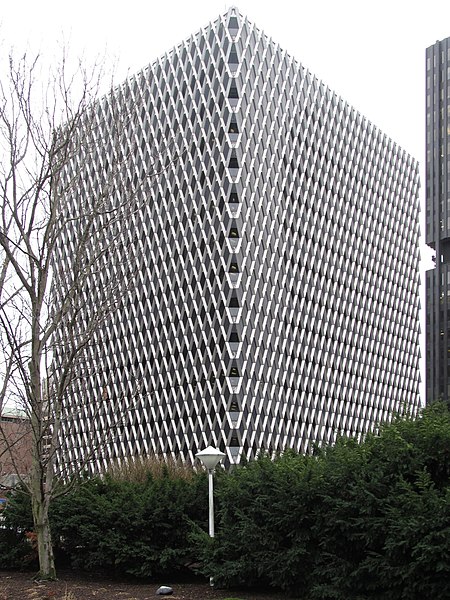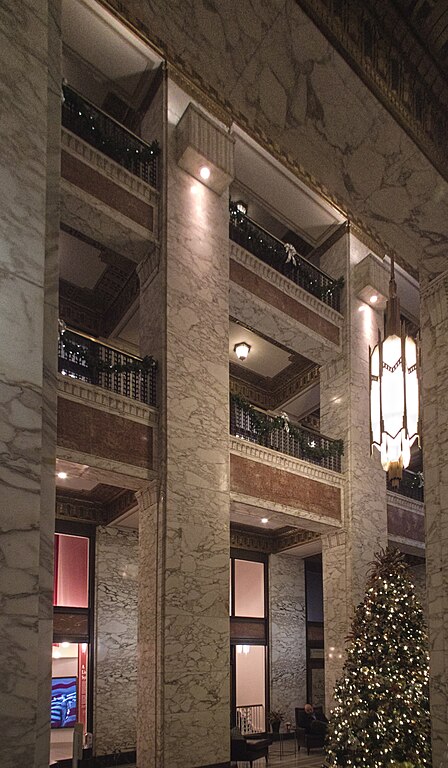
Not one of our most spectacular buildings, but this 22-storey minor skyscraper, opened in 1982, was designed by a firm with a history of breaking records. Skidmore, Owings & Merrill designed the Sears Tower (now Willis Tower), which was the tallest building in the world for quite a while; they also designed One World Trade Center, currently the tallest building in America, and the Burj Khalifa, currently the tallest building on earth. It is a huge firm with offices all over the globe, and Father Pitt does not imagine that this project got the same project leader as the Sears Tower.
Addendum: Skidmore, Owings & Merrill was also the firm responsible for Two PNC Plaza, formerly the Equibank Building. The lead architect on that project was Natalie de Blois, and when the building went up in 1974 it was the largest in the world designed by a woman. Another record!



















